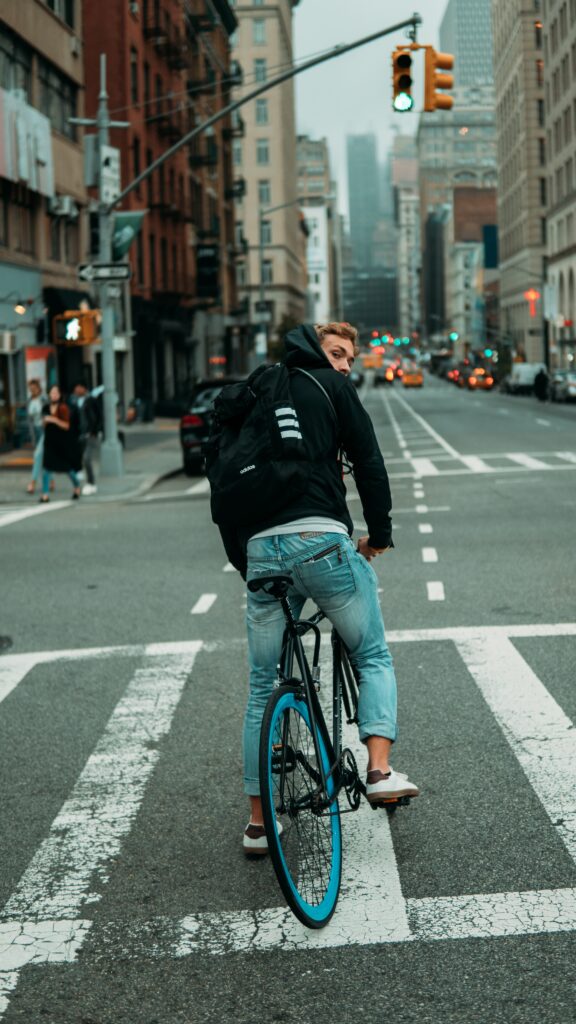Bike Traffic Safety Rules
Most people believe that cycling is only a leisure activity but during our current situation, it is the best way to avoid all of this hassle of public transport and get your daily exercise in while you ride to work (or wherever else you’re going).
Cycling is a healthy and fun way of exercising for everyone and it’s also a valuable skill that children can learn which may help them to get to school or the park—and fain independence. There are also many health benefits to cycling such as helping you lose weight and tone your body.
The virus has been causing difficulty in doing daily activities. We are all trying to find ways to avoid public transport to get to work or school. And if it’s your first time transporting with your bike, you might need to brush up on a few rules.
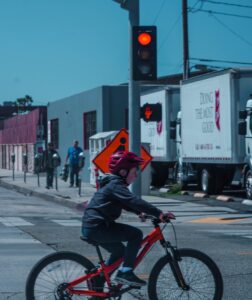
Although sharing the road with loud cars and motorbikes can be scary, but cyclists have the same responsibilities and rights as all the other vehicles.
Cycling is a fun way to get around your town but accidents happen, so in this article, there are some safety tips and rules that you can use to keep yourself safe, whether you are riding in a peaceful park or a major city.
Benefits of Learning Bike Safety Rules
Learning bike traffic safety rules is the first step to riding around your park or city safely. There are safety laws put in place to keep everyone safe and being educated with the rules will help keep you and others also safe. Always.
Some people may find that there are many things they didn’t know about cycling in this article. Learning something new and passing it on to other people is the best way to keep everyone well-versed on the ways of the road.
A big dilemma for some people is that they find it very hard and possibly scary to ride in traffic, but there are bike traffic rules in place for you to have an enjoyable bike ride.
If you do not follow these rules, something horrible might happen, resulting in someone or many people getting hurt. No one wants to assist, witness or even cause someone getting hurt—so make sure you take in all the safety tips, as they can help you keep safe.
It is your responsibility to know the important rules and what equipment you should wear to ensure safety. Bike traffic safety rules will allow you to make sure you and your bike are ready to go out and enjoy your day.

Bike Safety: Equipment You Should Wear
Before you go on a bike ride, whether it’s to a local park or around your city, you should always make sure you are wearing the right equipment when you go out cycling.
No matter where you are going—whether on a thirty-mile ride or down the street—a bicycle helmet is always important.
Studies have shown that wearing a helmet will help reduce the risk of brain damage and injury if there is an accident as they take the impact during the collision. To reduce the peak impact of the brain in case of an incident, helmets are designed with a cushioned insole to help prevent debris and dirt hitting your eyes, preventing eye injuries and distracting you from the road.
If it is difficult for you to see behind you, so it may be useful to get a small mirror to attach to a bike. These will allow you to see if cars are lining up behind you. If five or more cars are behind you, make sure to stop at a safe point and let the cars past.
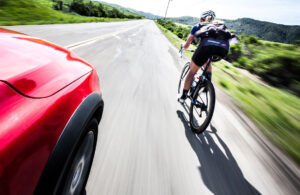
Visibility
Keeping yourself visible is key while cycling. You should also wear fluorescent, reflective clothing as it attracts the attention of everyone around you so they will make sure to keep you in mind while driving or also cycling.
Reflective Items
Following road safety rules such as stopping at stoplights and indicating to turn is very important to keep yourself and others around safe. So, if you are riding on the main road with turns, it may be useful to wear reflective items on your wrists so it’s very clear for drivers behind you to slow down as you indicate to turn. Make sure to tuck any loose straps and laces!
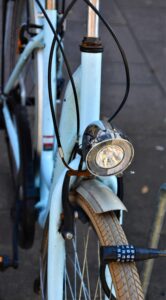
Lights
Riding in dark or low-lit areas without making your bicycle reflective or placing lights onto the fronts and backs of your bicycle can result in a higher chance of accidents. Without light, your reflective clothing will not be visible and you will be prone to accidents as vehicles won’t notice you.
Having lights on your bicycle instead will help drivers and pedestrians acknowledge you.
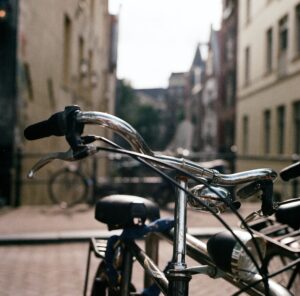
Bells
Having a bell is required on all bikes, it allows people with disabilities and their helper to easily move them out of the way. Using your voice to alert people may be better than having a bell but for younger children, it may be useful to install horns or a bell as it allows pedestrians and other cyclists to move out of the way as they may be too quiet.
Concentration
Keeping concentration and being aware of your surroundings is very important if you are riding along in traffic. You should try to cycle at a consistent speed and ride along with traffic, which will help you stay alert to what is happening around you, this will allow you to react more quickly to unexpected circumstances.
Bike Safety: Rules of the Road
While on the road, you have some very simple rules to follow if you are looking to cycle on the main road, be sure to check your bike traffic laws in your state as it may differ from other places.
Riding during busy, slow-moving traffic can be stressful, but there are simple rules that you can follow to make this as stress-free as possible.
- Staying in the middle lane and riding along with the traffic allows drivers to acknowledge you and will not try to go around you.
- While on busy streets, do not weave in and out of parked cars as incoming drivers, cyclists and pedestrians might not see you which would result in an accident.
- Make sure you maintain a good, comfortable distance from the edge of the pavement, if you get too close, the pavement may damage your tires or cause you to lose control.
- Do not ride on the sidewalks unless there are no other safe places to ride, this can be dangerous because drivers may not see you in intersections for coming out of their driveway. You should also be careful of car doors opening and children playing on the street, so make sure you keep your hands on or near the brakes at all times because this quick move could stop a huge accident from happening.
- Make sure you leave at least 1.5m between you and the cyclist in front and if you need to pass other cyclists and make sure you pass them on the left. This is very important to follow as it allows you to make quick decisions to make sure nothing goes wrong while you are traveling.
- Communication is also key to riding safely, make sure the drivers and other cyclists around you know your intentions, friendly eye contact can help make sure you are understood by everyone. You should be careful around intersections as they tend to be busy, make sure you pedal fast to get past them. Most accidents happen, around sharp bends and intersections. Semi-trucks tend to have blind spots as they turn, so it may be better to stop and let them go first.
- While cycling, make sure you check the weather as always because bright sunlight can cause distractions as well as leaving you fatigued, this can add more problems to your cycling journey. There is always a speed limit for everyone so you should make sure to obey them, especially around school zones and very busy shopping areas.
- Traveling with your friends or family is great, but you should always ride in a single file as traveling 2 or 3 abreast is not allowed.
- Confidence will also help you to stay safe, riding unsurely and nervously will cause others to take advantage. When you have confidence, you cycle with respect, you will be more likely to be granted respect and extra room in return.
- Finally, make sure you plan your route, it would be useful to have a break in between as a reward or to reduce your tiredness, it will make you more aware. If you are a new rider, then it would be more comfortable and safe for you to become confident if you use a quiet scenic route.
Final Thoughts
Hopefully, this article has given you all the essential you need to know to keep safe when cycling. Whether it be equipment pieces to aid your cycle safety or examples of rules of the road that you should follow.
If you are struggling or just want to become better at cycling, then there are bike-ability courses with instructors to help you build up your confidence and help you with anything you are unsure about. The really important thing is that you have fun, as cycling should be a safe, stress-free experience for everyone.

